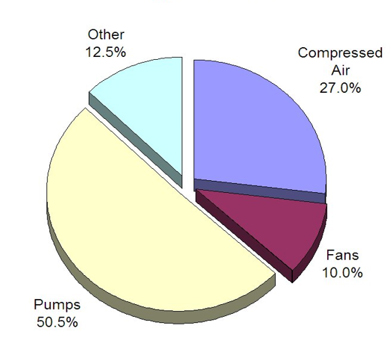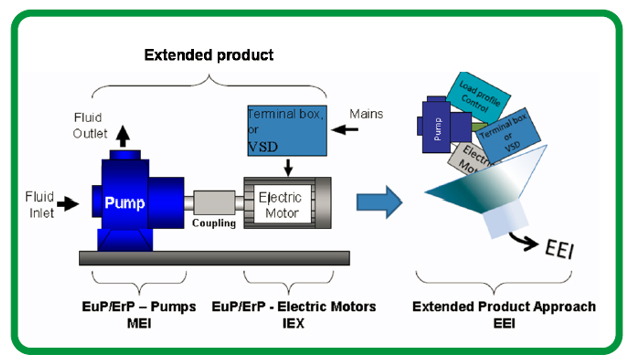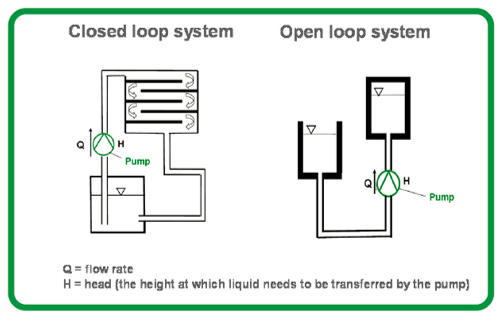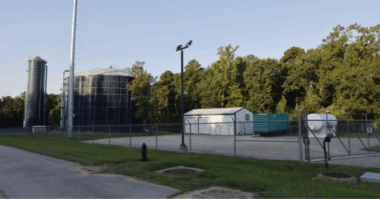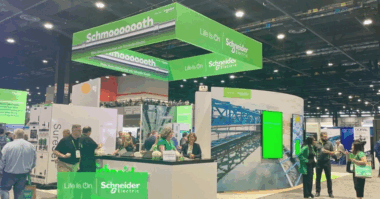This article is part of a three-part series looking at the importance of Smart Pumping and the value of new technologies behind it.
Authors: Hussain Ahmed, Schneider Electric, and Jack Creamer, Schneider Electric
Over 24% percent of energy consumed by industrial motors is consumed by pumps (see Figure 1) (footnote #1). In addition, due to the Affinity Laws, duty cycle variation and a frequent oversizing of pump systems; Pumps represent over 50% of motor driven energy savings potential (see Figure 2) (footnote #2)! This represents a major driver for the development of a new generation of energy efficient pumps and pump systems. Government agencies and regulatory bodies (like Department of Energy) are defining standards to help ensure the development of energy efficient pumps.
Figure 1: Pumps represent a major segment of the energy consumption pie
Figure 2: Pumps represent over 50% of motor driven energy savings potential
Regulations are becoming more strict over time as evidenced by some of the following provisions:
- In 2011, the use of IE2 class motors was prescribed by law
- From 1 January 2015 on, energy efficiency class IE3 will be mandatory for motors from 7.5 kW to 375 kW
- From 1 January 2017 on, energy efficiency class IE3 will apply to motors from 0,75 kW to 375 kW
European Commission legislation has introduced the concept of an eco-design for pumping systems. According to EU Regulation No. 547/2012, eco-design requirements suggest that a pumping system consisting of the combination of pumps, drives, controlling systems and electrical systems be considered for efficiency measurement (as opposed to the older system of evaluating only the separate components).
Figure 3 illustrates this “extended product” approach. This will result in a potential savings of 30% compared to 3.6% with the current “pump only” approach.
Figure 3: The extended product approach as presented by Europump, an association of pump manufacturers
The marketplace is now shifting in order to accommodate these more stringent efficiency regulations. The concept of the “Smart Pumping” which is also termed as “intelligent” pumping system combines higher efficiencies with sensor and software driven ability to regulate and control flow or pressure. This approach results in energy savings, increased equipment lifetime, and maintenance cost reductions.
In order to better understand how this concept of eco-design for pumping systems works we need to define some of the terminology presented in Figure 3.
- EuP – Energy using product: products which are dependent of energy input (such as electricity)
- ErP – Energy related product: products that use energy, or that do not use energy but have an indirect impact on energy consumption (such as water use devices, building insulation products, windows)
- MEI – The Minimum Energy Index: this is the minimum allowable level of efficiency of a pump
- IEX – Standard IEC 60034-30 defines the energy efficiency classes for asynchronous motors. Regulations (EC) 640/2009 and 04/2014 establish the conditions for the conversion to the new energy-efficient technology.
- EEI – The Energy Efficiency Index: this is utilized to determine the energy footprint of the pump under different load conditions
- BEP – Best efficiency point: Most of the pumps are not operating in this point.
Manufacturers provide efficiency data for pumps. Terms like BEP (Best efficiency point) are utilized but most pumps are not operating anywhere near their BEP. Most pumps, in fact, operate between MEI and BEP. It is estimated that 75% of pump systems are oversized, many by more than 20% (footnote #3). Also the efficiency of a pump is determined by whether or not the pump is being operated at partial load (not efficient), near full load (good efficiency), or at overload (not efficient).
However, pumps, as an isolated component within the larger physical infrastructure of a pumping operation, are just part of the picture. Electric motors and drives have to be factored in, so that a foundation for true efficiency gains can be enabled. This trio of components (pump+ drive + motor) is known as a complete drive module (CDM).
An important distinction between traditional systems and new “smart” systems is how all of these components interact with each other and automatically share vital information. For example the variable speed drive can recognize the levels activity of both motors and pumps (from idle to partial load conditions, to full capacity, to overload) and automatically makes the proper adjustments so that the pump operates as close to BEP as possible and for the motor to run as efficiently as possible.
A CDM works in “smart” mode for both open loop and closed loop pumping systems. An open loop system refers to a pumping system in which is liquid is pumped from an open source to a tank. In a closed loop system the liquid is circulates in a self contained system (see Figure 4).
Figure 4: Closed and open loop systems share different efficiency characteristics
In a “smart pumping” environment, the ability to determine, monitor and even to take corrective measures can be programmed into the CDM solution. This enables the users to run the pumps at near BEP throughout the life cycle of pumping systems.
Table 1 below compares traditional pumping system performance to the smart system approach in several key areas. The “smart pumping” approach, if properly implemented, will enable improvements in pump efficiency, energy efficiency, and ease of maintenance.
| System attribute | Traditional system | Consequence | Smart system |
| Energy effeciency | Lack of capability in components for monitoring consumption | Higher operating costs | Allows user to get much closer to optimal energy consumption operating points |
| Programming & controller | Non-standard programming practices | Longer start up times, more time to trouble shoot issues | -Pre-coded libraries allow of system standardization
-Object oriented programming allows for rapid trouble shooting |
| HMI | Use of lights for indicating alarms | More time to trouble shoot issues | Optimized screens and detailed alarms provide better maintenance |
| Drives | Switching on pumps with on/off contactors | Less protection of the pump because of more shocks to the mechanical systems | Though initial costs increase, drives provide higher energy efficiency and more pump protection against electrical surges and also cyber attacks as latest control systems have intelligence to provide firewall against attacks |
| Cabling | Hardwired systems | Longer start up times, more time to trouble shoot issues | Use of field bus in the control system reduces start up time and enables better maintenance |
| Remote monitoring | No possibility of accessing online data | Impossible to identify history and causes of past events, therefore preventative maintenance is not possible | Remote monitoring allows operators to better analyze conditions and to plan preventative maintenance strategies |
Table 1: Comparison of traditional smart pumping systems
Today, pumping systems account for nearly 20% of the world’s energy usage. In industrial facilities motors can consume between 25 and 50% of total electrical usage. Therefore, a huge opportunity exists for reducing these energy consumption numbers.
Footnotes
- DOE Office of Industrial Technology
- DOE Office of Industrial Technology
- US Department of Energy, “Variable Speed Pumping — A Guide To Successful Applications”, 2004, page 10.
READ PART 1 – Smart Pumping: A New Way to Address the Worldwide Water Distribution Crisis
READ PART 3 – Smart Pumping: Energy & More!
About the Authors
Hussain Ahmed is Program Manager in Schneider within the Industry Division’s OEM Segment team. Since 1994 he has focused on automation and commissioning projects, as well as global software and architecture development. Mr. Ahmed holds Bachelor’s degree in Electronic Engineering. He joined Schneider Electric in 2006 and has executed several roles including marketing, business development, and software development /commissioning.
Jack Creamer is Schneider Electric Segment Marketing Manager – Pumping Equipment, based in the United States. Mr. Creamer has more that 30 years in the Electrical Industry, and has been involved for 10 years in the Pumping Industry. He is involved in key industry organizations such as the Hydraulic Institute and Submersible Wastewater Pump Association, where he holds both Committee Chair and Board level positions. In his time in the Pump industry, he has help Schneider create numerous solutions that both enhance pumping efficiency and address issues such as maintenance and downtime.



